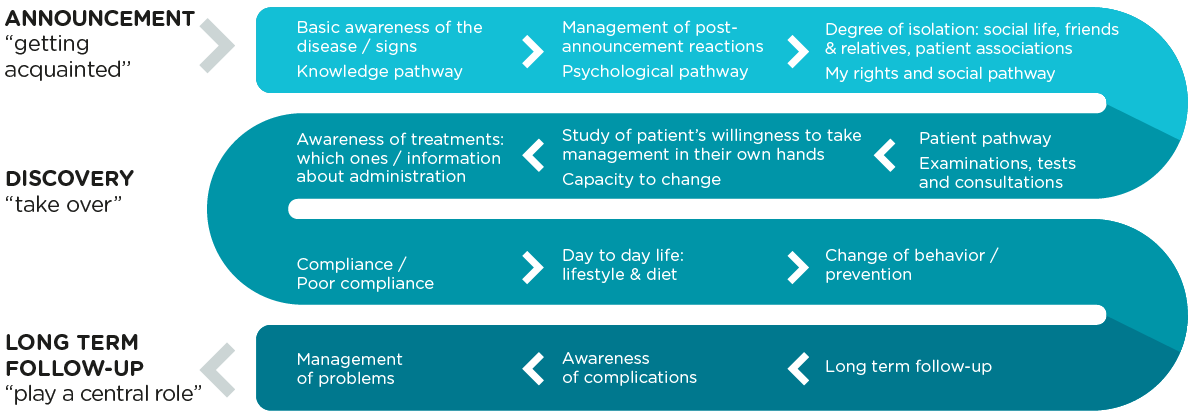Yet can we really accompany a sick person only with technology?
Our answer is no, technology is essential to our strategy but the human factor should remain central. A large percentage of patients do not fully adhere to their treatment, automated alerts and reminders are not enough and can be demotivating. P2link solution is to implement it with a strong follow-up, as a complement to the medical team support system. This is where our care managers and caregivers come into the loop. P2link made the choice to accompany patients by keeping the human being at the core of the system.
Each Digital Health Center assigns a care manager to a fixed cohort of patients. The Digital Health Center has a detailed knowledge of patients’ habits, living environments, loved ones. The team can decrypt many other psychological and social changes– called weak signals –upstream. The regular contact between patients and caregivers serve this purpose. P2link care managers undergo a dedicated training program, and are specialized in care analysis.
By applying a protocol adapted to each patient, alerts may be triggered in a timely manner to the medical team as soon as signals that no longer meet the required criteria appear. In the field, P2link care managers are assisted by a network of volunteers surrounding the patient; a team of caregivers. These persons are instrumental to the P2link system, with different profiles and backgrounds such as relatives, neighbors, and friends actively assisting the patient to fulfill daily tasks. Caregivers’ visions, feelings, actions and reports are critical to adjust secondary prevention actions and to launch alerts.
To stimulate this collaborative environment, P2link will conduct incentive programs for both patients and caregivers. Thanks to motivation and animation techniques deployed around these social circles that constitute the immediate environment of the patient, this policy will motivate patients to achieve the objectives set by the medical team.
Patient compliance
Health and therapeutic education programs are only efficient when accompanied by proper customization, interaction and follow-up tools, and by observation of behavioral changes.
With unique profiling tools, based on odds ratio formulae derived from epidemiological studies, P2link improves the personalization of the contents provided to each patient, helping patients change their behavior following the Prochaska and DiClemente’s transtheoretical model of change behavior.


